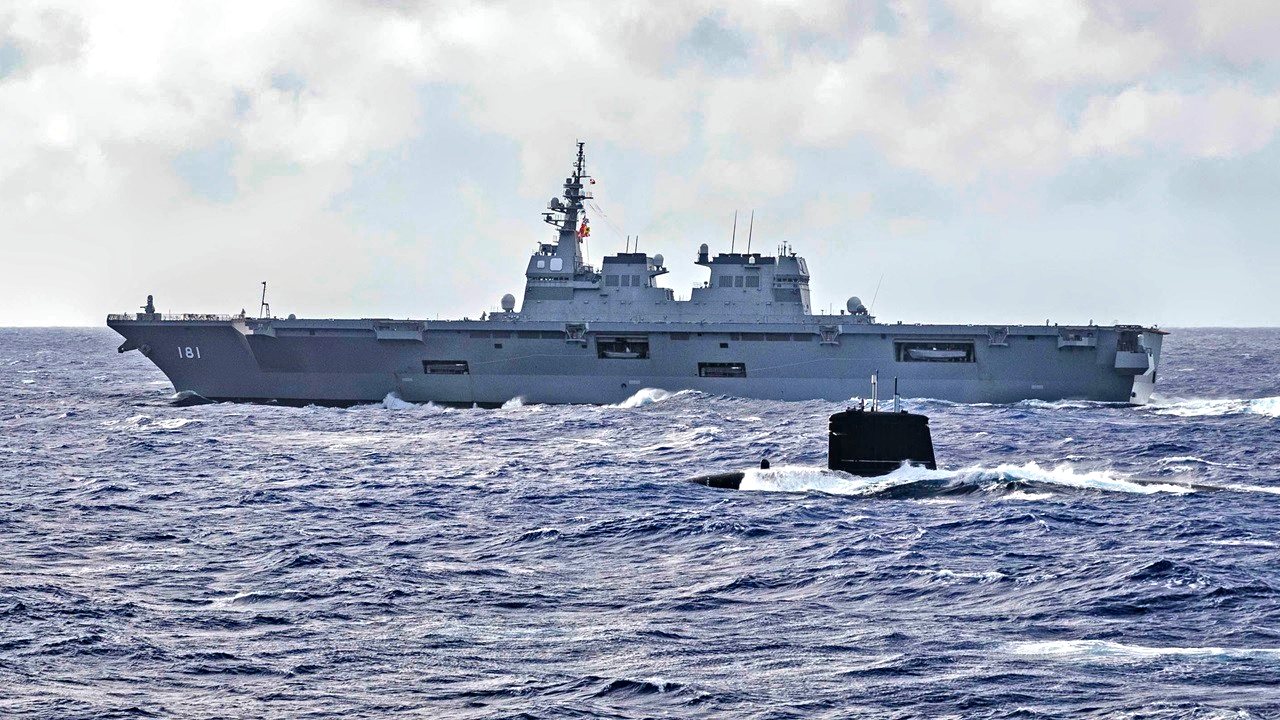Rubis-Class: How a French Submarine "Sank" a U.S. Aircraft Carrier
The French Rubis-class submarine Saphir demonstrated a critical vulnerability in U.S. aircraft carriers during a 2015 wargame exercise. Despite being an older, smaller submarine, the Saphir successfully penetrated the defense perimeter of Carrier Strike Group 12, which included the USS Theodore Roosevelt, and simulated a successful torpedo attack.
Summary and Key Points: The French Rubis-class submarine Saphir demonstrated a critical vulnerability in U.S. aircraft carriers during a 2015 wargame exercise. Despite being an older, smaller submarine, the Saphir successfully penetrated the defense perimeter of Carrier Strike Group 12, which included the USS Theodore Roosevelt, and simulated a successful torpedo attack.
-The Rubis-class, designed for stealth and speed in the Mediterranean, features advanced silencing technology and can carry a variety of torpedoes and missiles.
-The incident highlighted the potential dangers submarines pose to even the most advanced and expensive U.S. aircraft carriers like the Nimitz-class.
The French Rubis-class Submarine is a Carrier-Killer
The French navy is a powerful regional force. But it has never been known as the world’s best. Sure, France’s navy held back the British during the American Revolution. But they also got creamed by the Royal Navy both before the American Revolution and later, during Napoleon’s time.
Nevertheless, it was an aging French Rubis-class submarine, Saphir, that showed up the powerful U.S. Navy during a 2015 wargame exercise. During the event, Saphir skillfully and stealthily penetrated the defense perimeter of Carrier Strike Group 12, which included the nuclear-powered Nimitz-class carrier USS Theodore Roosevelt, as well as four escort ships.
US Aircraft Carrier Vulnerabilities to Subs
Prowling beneath the waves, Saphir secreted itself within firing range of the carrier and simulated a successful torpedo attack on the great American warship. Clearly, there’s a significant weakness in the unbelievably expensive U.S. aircraft carrier fleet that other militaries can exploit.
Some Interesting Facts About the Rubis-class
Rubis-class boats are smaller than their NATO counterparts. In fact, a standard Rubis-class sub has a displacement of about 2,700 tons. France has always considered itself a Mediterranean power. Because of this, the Rubis class was purposely designed to be small and fast. It is a nuclear-powered boat, possessing one K48 pressurized water reactor and delivering 48 megawatts, translating to some 64,000 horsepower. The Rubis-class has two turbo-alternators and one electric engine, giving the boat 7 MW/9,400 hp.

The French navy applied a revolutionary new stealth system on this class of submarine: the Améthyste silencing program.
A Rubis-class vessel has four 533 mm (21 inch) torpedo tubes. The submarine can carry a mixture of up to 14 different weapons systems. She can carry F17 Mod 2 21-inch heavy torpedoes and the MBDA Exocet SM39 missiles, and she can deploy naval mines.
France began its Rubis-class submarine program in 1974. The first submarine of this class had its keel laid down in 1976 and was deployed for the first time in 1979. This submarine was part of French President Charles De Gaulle’s program to build a French military that could operate independent of NATO and had its own nuclear deterrent.
Saphir was laid down on September 1, 1979. The submarine was originally called Bretagne. She launched in 1981 and was commissioned in 1984. So this was an old submarine by the time it “sank” USS Theodore Roosevelt in 2015. The French went on to decommission this boat in 2019. The Barracuda class is the intended successor to Rubis-class submarines.
Hopefully, the designers of the overpriced Gerald R. Ford-class aircraft carriers in America incorporated the hard lessons Saphir’s crew taught their U.S. allies during those wargame exercises in 2015.
Author Experience and Expertise: Brandon J. Weichert
Brandon J. Weichert, a National Interest national security analyst, is a former Congressional staffer and geopolitical analyst who is a contributor at The Washington Times, the Asia Times, and The-Pipeline. He is the author of Winning Space: How America Remains a Superpower, Biohacked: China’s Race to Control Life, and The Shadow War: Iran’s Quest for Supremacy. His next book, A Disaster of Our Own Making: How the West Lost Ukraine, is due October 22 from Encounter Books. Weichert can be followed via Twitter @WeTheBrandon.
All images are Creative Commons or Shutterstock.
From the Vault
Russia Freaked Out: Why the U.S. Navy 'Unretired' the Iowa-Class Battleships
Battleship vs. Battlecruiser: Iowa-Class vs. Russia's Kirov-Class (Who Wins?)


